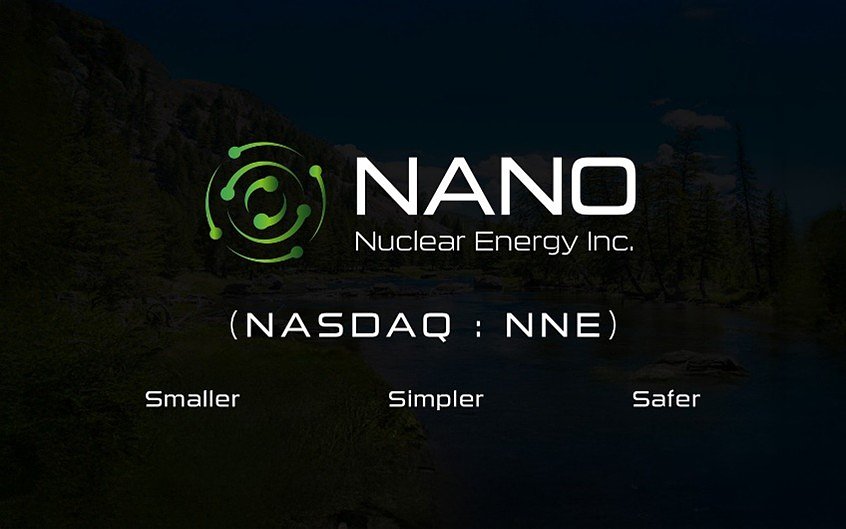
NANO Nuclear's ALIP Tech: Powering the Next Generation of Microreactors
NANO Nuclear Energy’s innovative pump technology is poised to unlock the potential of small modular reactors, promising durable, low-maintenance power for remote locations and beyond. But can the company scale up fast enough?
NANO Nuclear's ALIP Tech: Powering the Next Generation of Microreactors
NEW YORK, NY – November 19, 2025
Durability and Innovation at the Core
NANO Nuclear Energy Inc. (NASDAQ: NNE) recently announced the successful full-system testing of its Annular Linear Induction Pump (ALIP) technology, a critical step towards realizing the promise of advanced small modular reactors (SMRs) and microreactors. This isn’t just about a pump; it’s about fundamentally rethinking how reactors are cooled and maintained, potentially unlocking a new era of resilient and efficient power generation. The ALIP, designed to operate with high-boiling-point coolants like molten salts and liquid metals, addresses a key challenge in next-generation reactor design: ensuring long-term reliability with minimal upkeep.
“The elimination of moving parts is a game changer,” explains one industry analyst. “Traditional pumps are a constant source of potential failure, requiring frequent inspections and repairs. This technology promises to significantly reduce lifecycle costs and improve operational uptime, particularly in harsh environments.” NANO Nuclear's tests confirmed the ALIP's durability and performance at temperatures up to 350°C, validating core design features intended for zero-maintenance operation. The company is partnering with aRoboticsCompany to build out demonstration facilities and refine the technology.
The Promise of SMRs and Microreactors
The development of SMRs and microreactors is gaining momentum globally, driven by the need for decentralized, sustainable energy sources. These smaller, more agile reactors offer several advantages over traditional gigawatt-scale plants. They can be deployed in remote locations, providing power to off-grid communities, military bases, or disaster relief efforts. They also offer greater flexibility and scalability, allowing power generation to be matched more closely to demand.
NANO Nuclear’s approach focuses on portability and resilience. Its microreactors, ranging in output from 1 to 1.5 MW, are designed for diverse applications, including powering data centers, hospitals, and even space exploration initiatives. This aligns with a broader industry trend towards localized power generation and energy independence. However, translating innovative technology into commercially viable products requires significant capital and navigating a complex regulatory landscape. “The biggest challenge isn’t necessarily the technology itself, but proving its reliability and safety to regulators and potential investors,” one source familiar with the SMR market notes.
Scaling Up and Competition
NANO Nuclear is entering a competitive arena. Established players like NuScale Power and TerraPower are already forging ahead with their SMR designs, backed by substantial funding and established supply chains. While NANO Nuclear’s technology offers unique advantages, particularly in terms of durability and maintenance, the company is still in the early stages of commercialization. Its recent IPO provided a financial boost, but sustained growth will require successful demonstration projects and strategic partnerships.
The company’s valuation has seen significant momentum, with a market cap exceeding $1.5 billion as of November 2025. However, analysts caution that the stock remains speculative, given the company’s pre-revenue status and the inherent risks associated with advanced nuclear technology. A key component of NANO's strategy is its focus on the entire fuel cycle, including the development of a domestic source of High-Assay, Low-Enriched Uranium (HALEU) fuel fabrication. The company believes that controlling the fuel supply chain is critical for ensuring long-term sustainability and energy security.
The Coolant Challenge and Technological Advancements
NANO Nuclear’s ALIP is specifically designed to work with advanced coolants like molten salts and liquid metals. These coolants offer significant advantages in terms of heat transfer and safety, allowing reactors to operate at higher temperatures and lower pressures. However, they also present unique challenges. Molten salts and liquid metals can be highly corrosive and require specialized materials and careful handling. “Material science is absolutely critical in this space,” explains an expert in advanced reactor coolants. “Finding materials that can withstand the high temperatures, radiation, and corrosive environment within a reactor is a major undertaking.”
The company's technology is drawing attention from organizations seeking more robust, longer-lasting power solutions. It is pursuing a path to develop solid core reactors for use in remote and harsh environments, where traditional cooling systems would quickly fail. This technology will require years of continued development and testing, but it has the potential to fundamentally change how we think about power generation.
📝 This article is still being updated
Are you a relevant expert who could contribute your opinion or insights to this article? We'd love to hear from you. We will give you full credit for your contribution.
Contribute Your Expertise →